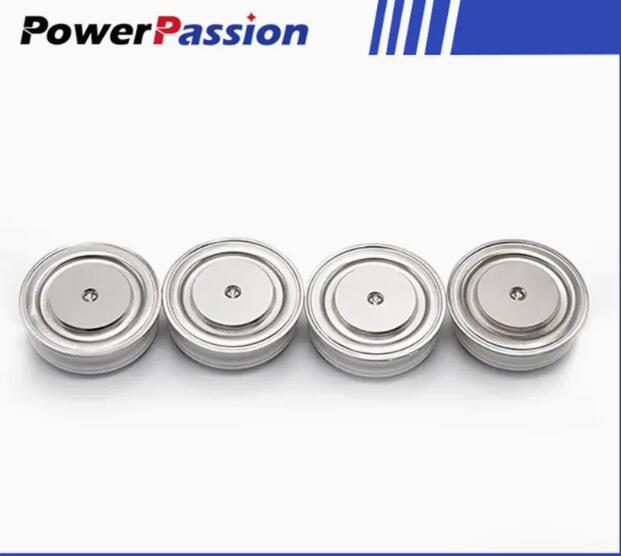Views: 0 Author: Site Editor Publish Time: 2025-10-16 Origin: Site









If you've ever opened an industrial control cabinet only to find another SCR blown, you're not alone.
Silicon Controlled Rectifiers (SCRs), also called thyristors, are the backbone of countless industrial power systems — from induction heating to motor drives and welding equipment.
But when an SCR fails, it can bring your entire operation to a halt.
The good news is that most SCR failures are predictable, preventable, and correctable — especially when you understand what causes them and how to select the right replacement.

Even the best SCR can fail if operating conditions aren't right.
Here are the most common reasons behind premature SCR breakdown:
Heat is the silent killer of every power semiconductor.
Poor heat dissipation, blocked airflow, or undersized heatsinks can push the junction temperature beyond safe limits.
Once it exceeds about 125–150 °C, permanent junction damage begins.
A tiny hot spot today can become a catastrophic short circuit tomorrow.
Tip: Always monitor case temperature — not just ambient air temperature — and ensure heatsink contact surfaces are clean and properly torqued.
Sudden current spikes, line transients, or inductive load kickback can exceed the SCR’s surge rating , damaging the junction instantly.
This is especially common in welding systems or converters with poor snubber design.
According to Littelfuse's Application Note, many field failures occur during switching surges rather than steady-state operation.
Fix: Use a properly rated transient suppressor or choose SCRs with high surge tolerance.
For example, KP-500A / KP-1000A 1800 V Disc-Type SCRs from PowerPassionElectric feature surge ratings exceeding 46,000 A, providing a safer margin under transient load.

An SCR doesn't just fail because of power stress — sometimes it's triggered incorrectly.
If the gate signal is too weak or noisy, the device may only partially turn on, causing local overheating and uneven current distribution.
A poorly timed or missing gate pulse can leave the SCR conducting uncontrollably.
Fix: Check gate current and voltage trigger levels during design.
Use proper isolation and shielded wiring for the gate driver circuit.
Incorrect mechanical clamping is a subtle but serious cause of SCR failure.
Too much torque cracks the internal ceramic; too little leaves air gaps, raising thermal resistance.
As Infineon notes in its reliability guidelines, stable thermal interfaces and even pressure distribution are essential for maintaining rated lifetime.
Fix: Follow manufacturer torque recommendations and always use flat, smooth heatsink surfaces,and controlled clamping force ensures consistent and long-term reliability.
Even perfectly designed systems experience natural fatigue over time.
Repeated heating and cooling cycles cause microcracks in solder joints and contact layers, increasing resistance and heat buildup.
This gradual degradation eventually leads to leakage or short-circuit failure.
Fix: Plan preventive replacement cycles in high-duty systems (e.g., furnaces, converters) and choose SCRs with proven thermal cycling endurance.
PowerPassionElectric's KP-series devices are rated for continuous operation from –40 °C to +150 °C, with vacuum-soldered die attach for superior thermal stability.

Once a failure occurs, many users simply reinstall the same model — often repeating the same mistake.
Here’s how to do it right:
✔ Match or exceed ratings – Always check voltage , current , and surge ratings against your system's worst-case load.
✔ Verify package type and cooling method – Replacing a stud-type SCR with a disc package can dramatically improve heat transfer and current sharing.
✔ Confirm gate characteristics – Ensure your driver circuit can provide sufficient gate current and voltage.
✔ Work with a reliable supplier – A knowledgeable manufacturer can help cross-reference obsolete parts and recommend the best-fit alternative.
At PowerPassionElectric, we help industrial users replace failed SCRs with modern, high-reliability equivalents. Our KP-series disc-type thyristors combine high surge capacity, wide temperature tolerance, and robust mechanical design — ideal for demanding applications such as induction heating, converters, and motor control.
Most SCR failures aren't mysteries — they're messages.
They point to an underlying mismatch between the device, the environment, or the system design.
Understanding these causes helps you prevent repeat breakdowns — and choosing a properly rated replacement keeps your operations running efficiently.
Contact PowerPassionElectric for a replacement recommendation matched to your system.

